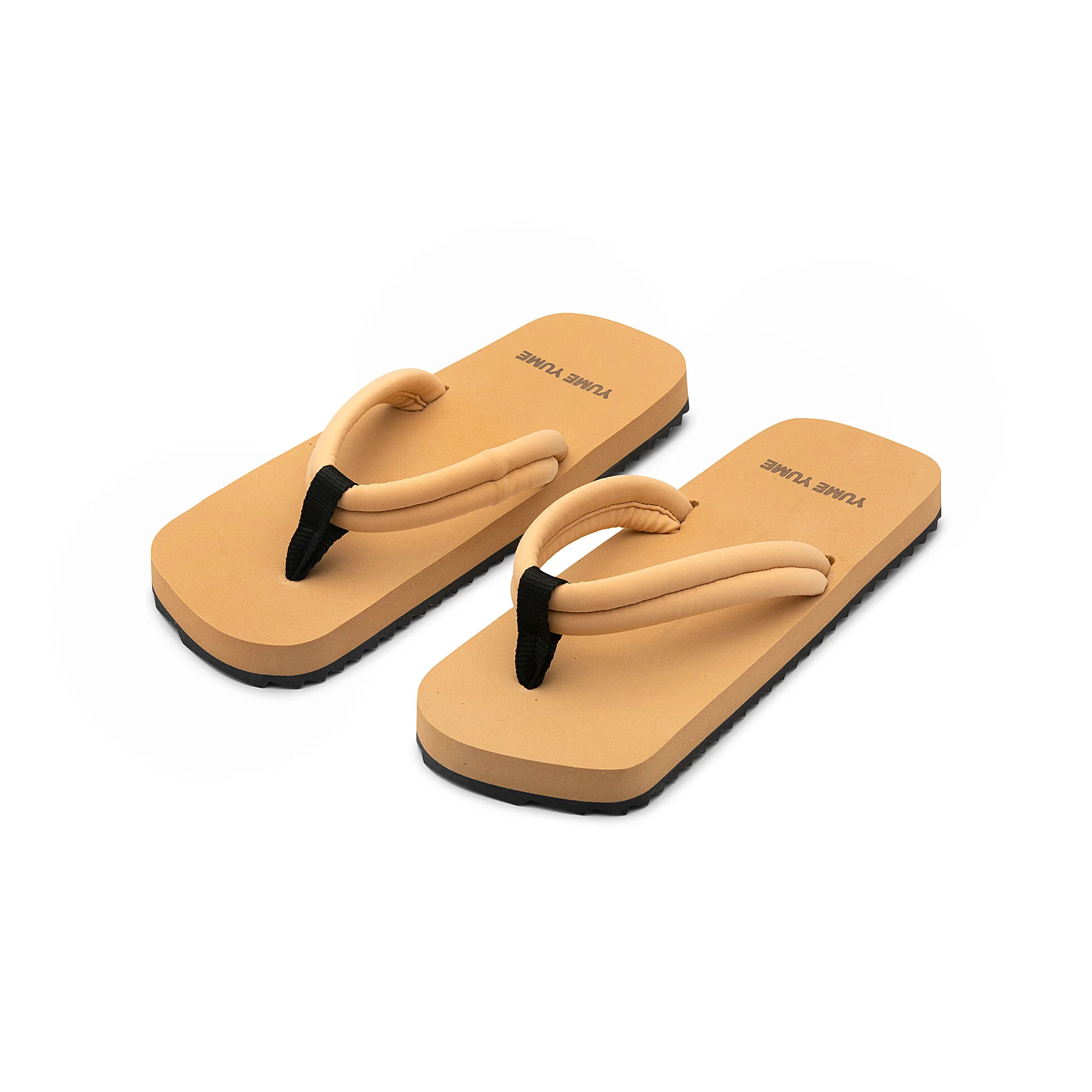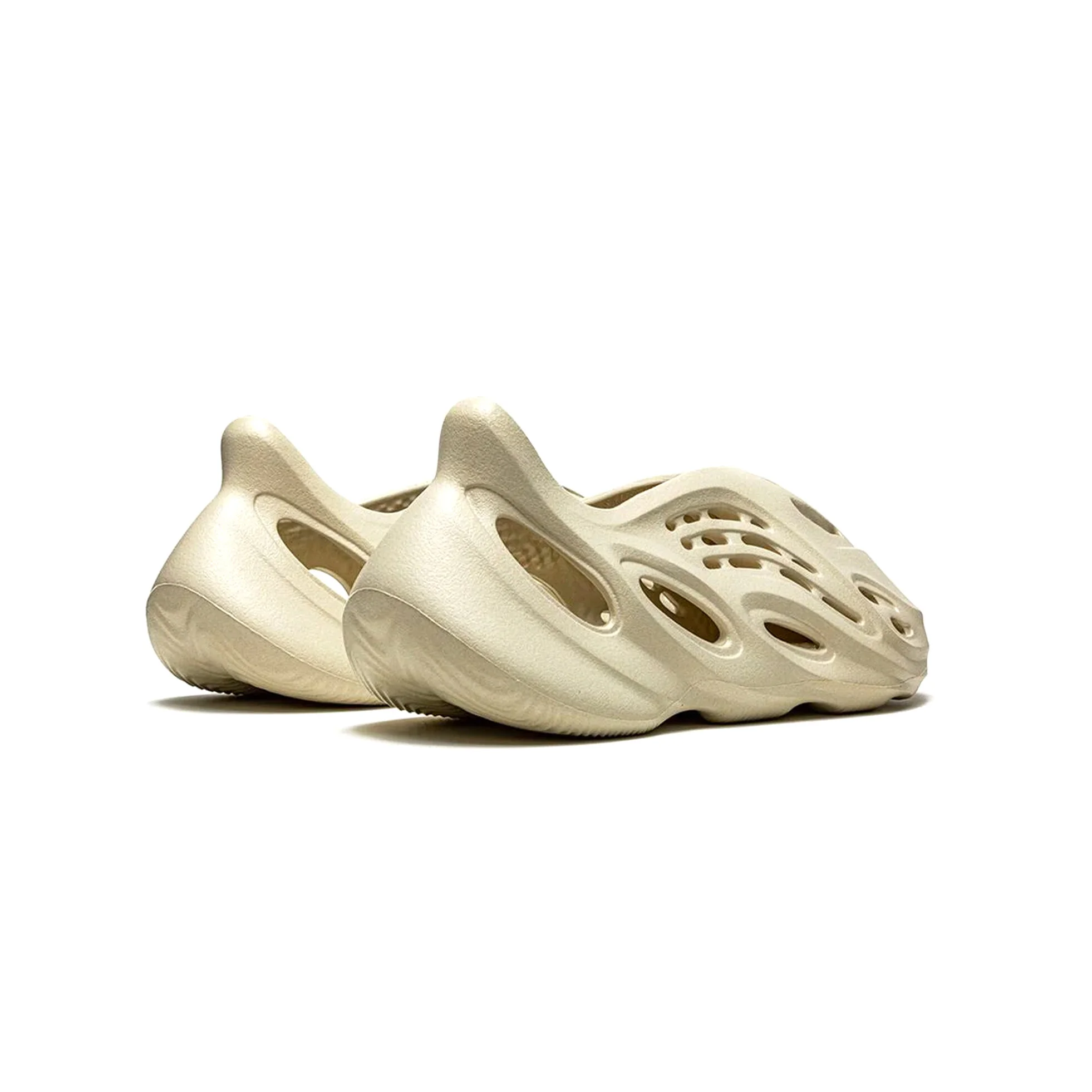Slippers and Slides
Contextualising Your Rotation
Words by Grace Warn
Whether it’s Yeezy Slides, Suicoke Zavos, Birkenstock Bostons or Merrells Hydro Mocs, over the last year we have seen way more of everyone’s heels and toes than ever before. What’s more, the once faux pas of socks and sandals has become a staple uniform of the most influential wearers. Not only has this trend put fire in the bellies of past generations, who love telling us ‘what goes around comes around', it has also given our feet a well-earned rest from tight laces and rubbing counter lining.
Dubbed by forecasters as ‘Two-mile footwear’, aka shoes that are designed to be used to run errands, walk the dog, grab a coffee, slides, mules, and sandals are quickly becoming premium shoes for wearing all day. What was a flimsy Adilette for around the pool has become a shoe for city-stomping and – air quotes – hiking.
Lucila Saldana, Footwear and Accessories Editor at WGSN – the perfect person to pick the brain of when it comes to footwear penchants of the day – says: “We started to forecast this trend around 2018. On top of everything else they were interrogating societally; early millennials were the first generation to challenge the traditional working structure and they started to have more flexible working lives. This meant they needed a wardrobe that sat between ‘normal’ and pyjamas. This grew and grew, and the pandemic accelerated it into all generations.”
The perfect footwear answer to this strange limbo? Clogs, slippers, and slides. Ironically, the styles’ proliferation is founded in a millennial rebellion against the lifestyle of past generations and it manifests itself in the wearing of their old favourites. This strange duplicity can be seen in numerous other areas of our current existence: “People are going back to the basics. Everyone is starting to care for themselves, each other and the world again,” explains Dave Hendricks, a member of the design collective behind the brand Yume Yume. He continues: “This naturally translates into an urge to be close to nature and designing to this feeling came naturally to us.”
The Amsterdam-based brand has quickly made a name for itself in the saturated world of slides and sandals. Yume Yume’s first flip flop was designed to fill a gap in the founder’s rotations: “Dave and I were travelling to the Philippines and wanted to buy nice footwear for ourselves. We didn't want to spend 200 Euros but also didn't want to buy from any big commercial brands. So, we set out to design something in the middle,” explains Eva Korsten, founder and art director of the brand. The Xigy slide was born, an EVA foam and neoprene middleman that removes itself from the single-use holiday slide in every way.
Removing the sandal from the traditional realms of sun and sea is something both emerging brands and industry veterans battle with. Drew Little, the lead footwear designer that worked on Nike’s first Offline drop says: “In early 2003, visvim released their first sandal.” Little is harking back to the original slide that was inspired by Bulgarian artist Christo Javacheff, which is visibly, and undeniably, the inspiration for the majority of performance sandals on today’s market.
Hiroki Nakamura’s visvim launched back in 2001 on the premise that shoes are one of life’s daily tools. Made to function as an everyday shoe, all of Nakamura’s footwear designs are a seamless blend of his own design experience (working at Burton Snowboards) and a reaction to the societal pressures of the time. Little continues: “The shoe was so heavy and premium, something so far removed from the flimsy sandals at the time. It changed the landscape of what’s acceptable when it comes to slides.”
It's on that landscape, and thanks to the developments in new production technologies that some of the most iconic slide silhouettes took hold. Lucila Saldana says: “In the late 90s to early 2000s Merrell, Birkenstock and Crocs were pushing the highly functional. These brands led the way in the technicalities of comfort footwear.” So, it’s no wonder that today, we are harking back to these brands for their specialisms. Following the pragmatic belief of ‘if it ain’t broke don’t fix it’, brands and their fans haven’t strayed far from their iconic silhouettes.
Crocs are the archetype of this. The brand has solidified itself at the forefront of moulded footwear with its holey sling back foam shoe that we have all slipped into at some point. Kitty Shukman, who consults for the brand and is dedicated to pushing the iconic form forward explains: “Crocs pioneered the foam movement ahead of so many others that are now following. Because of this and the momentum Crocs has right now it’s just about pulling that original innovation back into the forefront of the space.”
Thanks to Croc’s commitment to injection moulding, these innovations can be implemented pretty simply. There’s no denying this production method has some cons, moulds are an expense, and the shoes are formulated from an oil-based product Croslite, but the pros outweigh these no end. By keeping production close to home – which not only works wonders for design but also the planet too – increasing the precision and quality of parts and enhancing the strength of a mono final product, injection moulding allows for high-quality uniformity. Kitty continues: “Injection enables me to look at shoes as fully sculptural objects. Due to its mono-materiality, I can visualise the shoe being carved from smooth marble or cast in clear resin. This blurs the boundary between design and art and constantly allows me to push the limit of what is considered to be footwear.”
Structure, mono-material, pushing boundaries, function. What’s become clear is, when mulling over the archive of slides, the same vernacular is thrown up repeatedly. One style that encapsulates these semantics is the Nike Air Moc. An industry-shaping yet understated footbag come surf shoe that initially took inspiration from a potato – there’s an interesting story there – the original ACG Moc was the epitome of chuck on and leave.
Far from the runners and hurdlers of Nike’s normal clientele, the team were tasked with designing for the surfers, rock climbers and triathletes of the world – the extreme sporting types. Tory Orzek, a member of Nike’s Advanced Design Development Group during the 1990s witnessed this process unfurl on the 4th floor of Nike headquarters, and, quite frankly, overturned it. He shares: “The first group assembled this jumped-up cross trainer with loads of layers. It wasn’t right, what Nike needed was a before and after shoe!”
Having spent his childhood in the San Fernando Valley, Los Angeles, Orzek had tried his hand at surfing and have seen surfers carry boards onto beaches in Ugg boots. It was this coming-of-age experience that informed his decision to create a shoe that was far from the cross trainer his colleagues had formulated. “You don’t need a trainer for surfing! You need something to keep your feet warm on your 20-minute drive to the beach and back!”
Using a mono-buffed leather upper, Steve McDonald’s Regrind sole, and a toggle system the versatile footbag was born. The Air Moc’s simplistic design was the ultimate antithesis to the increasingly functional outdoors footwear that fellow ACG brains were meticulously inventing. Orzek was undeniably and unapologetically what Mark Parker demanded him to be – a thorn in in-line design.
Many mark this style as the first time that Nike designed for the holistic life of an athlete. Instead of pushing purchasers to ‘Just Do It’, Orzek reframed athleticism and admitted that sportspeople aren’t on the move all the time. The shoe promoted recovery, a critical component to successful performance.
Speaking of mavericks in the ‘after sport’ market, as Lucila says, Merrell has diversified their offering and made it attractive to the early adopters of now. “Merrell began bridging the gap between function and fashion with Jungle Moc release more than 20 years ago. Now, because we have perfected the performance, the challenge comes in how we play with patterns, material and colour to be trend relevant and "cool enough" to wear in daily life too,” explains Ian Cobb, design director at Merrell.
Cobb’s hesitancy to reference his product as ‘cool enough’ is seemingly solely based in modesty and bypasses the virality that the shoe nurtured only 12 months ago. The amphibious single-density injected EVA went from the feet of surfers to the feet of fashion editors in a matter of weeks and the shoe quickly became sealed by a quick nod of approval by those in the know. In this instance, the utilitarian simplicity that is founded in mono-material formation speaks to the ever-growing purchasing power behind distinguishable, other- worldly silhouettes that are the product of the high-tech 3D printed shoes of Zellerfeld and it’s pioneering colleagues.
After 1500 words of deliberating, it’s become obvious to me that the styles that have come to exemplify the slide arena are founded in their removal from the ordinary. Whether it’s encouraging people to revel in the delightful disfigurement of their designs or hurdling the limitations of footwear production, slide designers have monopolised cutting edge consumer- friendly design in brand new ways.
It’s no surprise really that Tory Orzek, creator of the defining design, distils my conclusions perfectly: “If you try to make Pegasus 44, it’s really difficult. But if you do something like the Air Moc that the world has never seen before - the world’s your oyster. The shoe has a whole new meaning, there is nothing to compare it to.”









